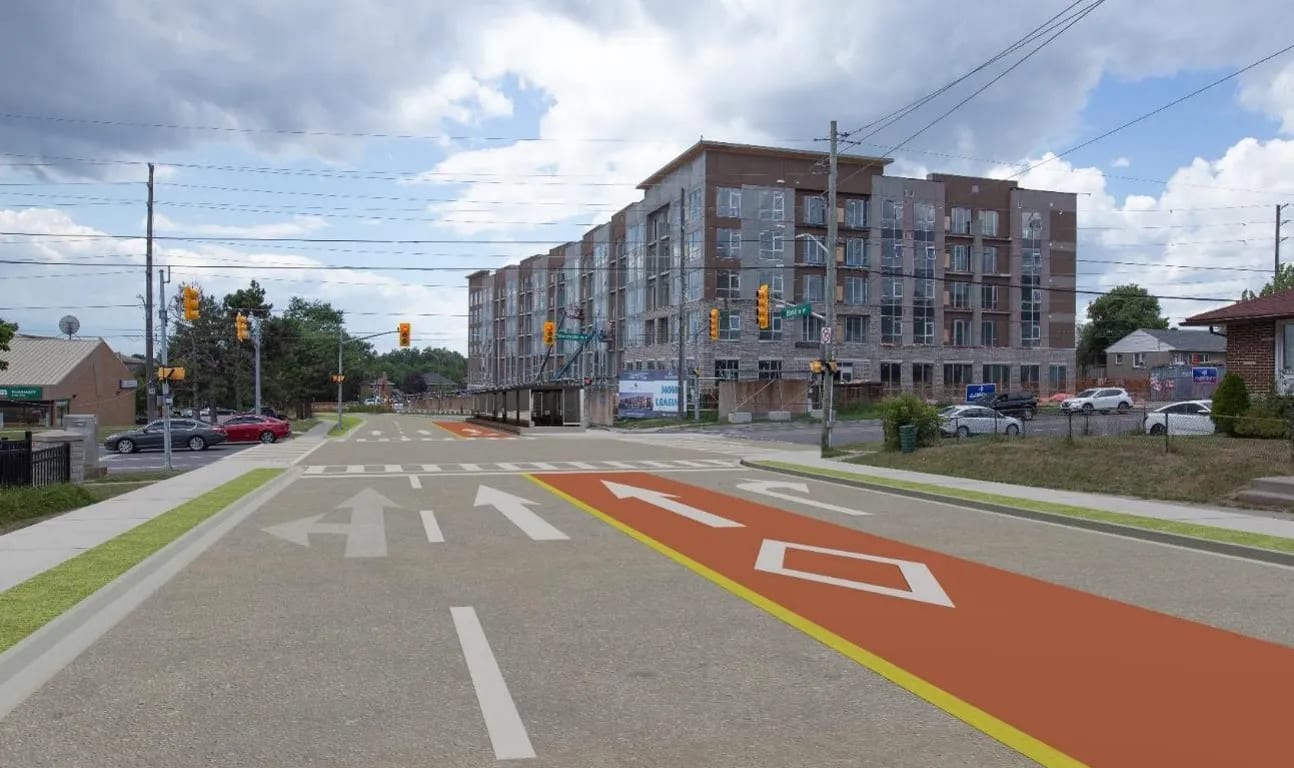Delivering new rapid transit for growing Durham Region community
Metrolinx is working to deliver the Durham Scarborough Bus Rapid Transit project (DSBRT).
May 6, 2021
The Durham Scarborough Bus Rapid Transit project will bring 36-kilometers of bus rapid transit that would serve Oshawa, Whitby, Ajax, Pickering and Scarborough, and connect with Scarborough Centre, the University of Toronto Scarborough Campus and the TTC’s Line 2, Line 3 and the future Scarborough subway extension.
The DSBRT project is essential to support the growth that is forecasted in the next 20 years along the corridor from downtown Oshawa to Scarborough Centre.
The primary goal of the project is to create stronger connections and support an efficient and sustainable transportation network as the region grows.
The DSBRT line will make transit travel faster and more reliable, as well as increase capacity to meet the growing demand. It will allow for seamless connections with local transit networks, providing the residents of Durham Region and the City of Toronto with more flexibility and choice to get where they need to go.
The Durham-Scarborough corridor is expected to support approximately 215,000 more residents and 66,000 more jobs by 2041. The project will bring $686-million dollars of economic benefits to the region, with significant transportation, environmental and socio-economic benefits for the community.
Most of these benefits come from the corridor’s ideal location to connect key destinations like downtown Oshawa, downtown Whitby and Pickering Village in Ajax.
Metrolinx recognizes that Whitby has a unique and vibrant downtown and that is why the transit agency is working closely with our partners at Durham Region and the Town of Whitby to ensure potential impacts to the surrounding communities are well understood.
To date, Metrolinx has held three formal public information centre sessions as part of the Transit Project Assessment Process (TPAP) planning stage, two virtual open houses with community members, 17 meetings with stakeholders, including local elected officials and businesses, and has fielded over 500 questions from residents on previously proposed design options.
The next virtual open house for the community will be held on May 20th, 2021, on Metrolinx Engage to gather feedback on the refined design option for Whitby. To register for this virtual, fully accessible event please click here.
Thanks to the community engagement thus far, the design has evolved from curbside dedicated transit lanes, to a full pedestrian transit mall, to a north side pedestrian mall, and now to a three-lane design with a westbound mixed traffic lane.
Metrolinx has heard the Whitby community clearly – residents want Metrolinx to maintain eastbound and westbound through traffic in the downtown core. The refined preliminary design includes three lanes of traffic, which will provide eastbound cars and buses with a dedicated lane, and westbound cars and buses with a shared lane between Perry Street and Byron Street.
This new option will:
- Maintain continuous eastbound and westbound general traffic movement on Dundas Street
- Minimize neighbourhood traffic infiltration and keep school buses, trucks, large vehicles on Dundas Street
- Improve pedestrian, transit, and driving access to businesses and support step free access on both sides of Dundas Street
- Provide more space for streetscaping and enhance the public realm on Dundas Street
- Maintain the character of Downtown Whitby
- Restore all 31 on street parking spaces, through an expanded parking lot at Elm Street and Byron Street
The new, refined design presents three lanes between Perry Street and Byron Street. Cars and buses will share a lane heading westbound and will each have their own dedicated lane heading eastbound. (Metrolinx image)
Metrolinx will continue to consult with the community, stakeholders, elected officials and municipal and regional partners to fine tune the three-lane preliminary design option.
Whitby residents can join Metrolinx officials at the next virtual open house on May 20th, 2021, as well as the fourth public information centre as part of the TPAP slated for Summer 2021.
Once funding is secured and Metrolinx moves into the detailed design phase, there will be more opportunities for the community to provide feedback.
Looking ahead, Metrolinx will establish Community Liaison Committees that will meet regularly throughout the lifecycle of the project and will include stakeholders such as local residents, business associations and other important organizations along the corridor to provide Metrolinx and its successful constructor with feedback on matters such as traffic calming measures, business supports, mitigation strategies for construction and noise disruption to ensure that it reflects and meets the need of the community.
To keep informed on upcoming public engagements, please subscribe to the Metrolinx Durham regional e-newsletter here, and to the project mailing list by e-mailing the team at DSBRT@metrolinx.com. For more information on the DSBRT project and previous public engagements, please visit Metrolinx Engage.
by Jocelyn Stenner Metrolinx capital communications senior advisor, Erika D’Urbano Communications senior advisor
